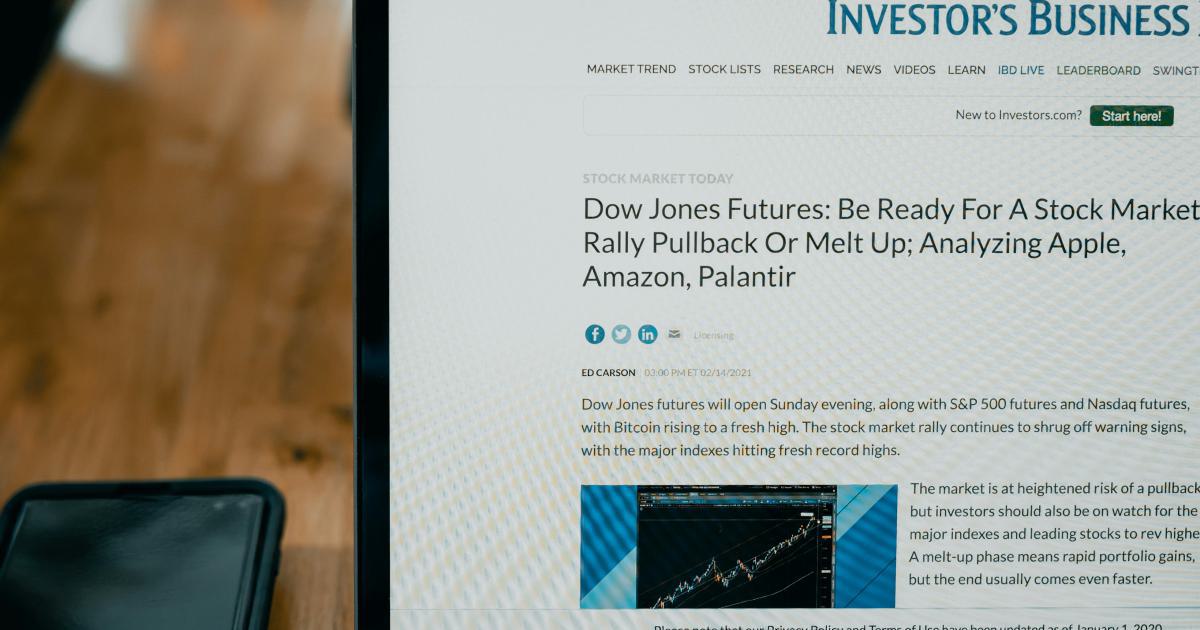7 Essential Risk Management Strategies for Hedging Currency Trades

In the dynamic world of financial markets, risk management is not merely an option—it is an absolute necessity. For traders involved in hedging currency trades, employing robust risk management strategies can define the difference between long-term success and detrimental losses. In today’s volatile markets, understanding the various risks associated with currency trading and knowing how to mitigate them effectively is critical. This article provides a comprehensive exploration of seven essential risk management strategies that are indispensable tools for anyone engaged in hedging currency trades.
1. Understanding the Intrinsic Risks in Currency Trading
Currency markets are renowned for their high liquidity and global influence, but they are also rife with inherent risks. Whether you are a novice trader or an experienced professional, acknowledging and understanding these risks is the first critical step toward effective risk management.
1.1 Market Volatility and Liquidity Risk
Currency markets experience price fluctuations driven by geopolitical events, economic data releases, and market sentiment. Such volatility can lead to sudden and unpredictable swings in currency values. Liquidity risk, where the trader may not be able to execute orders quickly at a desired price, further complicates the trading process. Traders must be constantly aware of external factors, such as policy announcements or unexpected economic indicators, that could trigger rapid market movements.
Market volatility is particularly pronounced during periods of economic uncertainty or political instability. For example, during major elections or geopolitical crises, currency pairs may experience rapid devaluation or unforeseen spikes in volatility. Recognizing these patterns enables traders to plan ahead and set sensible stop-loss orders and take-profit points to limit potential losses.
1.2 Credit and Counterparty Risk
Credit risk in currency trading often emerges from involvement with financial institutions and counterparties who might default on deals or encounter financial distress. Counterparty risk becomes particularly significant when engaging in over-the-counter (OTC) transactions. In these cases, the lack of a standardized clearinghouse means reliance is placed squarely on the counterparty’s creditworthiness.
A recent example can be seen during the financial crisis when several institutions failed to honor their commitments, forcing traders to absorb unexpected losses. Thus, managing counterparty risk—by selecting reputable brokers and using credit derivatives where appropriate—is essential to safeguarding against adverse outcomes.
1.3 Systematic and Operational Risks
Operational risks are the inadvertent consequences of errors in transaction processing, system failures, or communication breakdowns. With the increasing integration of technology in trading, traders now rely heavily on automated systems that execute orders at lightning speed. However, system glitches, software bugs, or cybersecurity breaches can lead to significant financial losses.
In the case of systematic risk, external factors such as regulatory changes or macroeconomic shifts can affect almost every market participant simultaneously, leaving little room for individual hedging strategies. Consequently, understanding both systematic and operational risks is crucial in developing a robust risk management plan tailored to currency trades.

2. Diversification: Spreading Your Currency Exposure
Diversification remains a cornerstone of risk management in any investment portfolio. By spreading exposure across various assets and currency pairs, traders can reduce the impact of adverse price movements in any single market. This strategy is especially relevant when hedging currency trades, as it diminishes the risk of large, concentrated losses.
2.1 The Principle of Diversification in Trading
The age-old advice of not putting all your eggs in one basket is particularly effective in currency trading. By diversifying across multiple currency pairs and financial instruments, you can buffer your portfolio against unpredictable market movements. Traders might consider diversifying not only across different currencies but also across asset classes—such as equities, bonds, and commodities—that may react differently under similar economic conditions.
In practice, the application of diversification might include maintaining positions in both emerging market currencies and more stable, developed market currencies. For instance, balancing trades between the US Dollar, Euro, and currencies from smaller emerging markets can help smooth out volatility and protect against localized economic downturns.
2.2 Tactical vs. Strategic Diversification
There are two primary forms of diversification: tactical and strategic. Tactical diversification is short-term and responsive to current market conditions, aiming to capitalize on immediate opportunities. In contrast, strategic diversification involves a long-term approach based on pre-determined asset allocation and risk tolerance levels.
Traders should blend these strategies to optimize their portfolios. While strategic diversification provides a stable, foundational risk buffer, tactical adjustments ensure that portfolios remain agile and responsive to new market trends. Consequently, this balanced approach helps in managing the inherent uncertainty of currency markets.

3. Utilizing Stop-Loss and Limit Orders
A practical and effective risk management tool in hedging currency trades is the use of stop-loss and limit orders. These tools automate the process of capping losses and securing profits, allowing traders to participate in volatile markets without being tethered to constant market monitoring.
3.1 The Mechanics of Stop-Loss Orders
A stop-loss order automatically triggers the sale of a currency position when it reaches a predetermined price. This mechanism is designed to prevent excessive losses by ensuring that a position is closed before it deteriorates further. The critical aspect of setting a stop-loss is finding the optimal balance—too tight a stop could lead to premature liquidation during normal market fluctuations, while too loose a stop could expose traders to larger losses.
Traders need to base these levels on historical market data and the volatility of the specific currency pair. Tools like the Average True Range (ATR) can be used to determine appropriate stop-loss distances. By aligning stop-loss triggers with quantifiable market volatility, traders can protect their positions while minimizing the risk of exit during minor market corrections.
3.2 The Role of Limit Orders in Securing Profits
Limit orders work similarly by executing trades at a favorable price when certain conditions are met. Unlike stop-loss orders, limit orders are set to capture profits when the market moves in the trader’s favor. Setting appropriate limit orders is equally vital; these should be based on realistic market expectations and complemented by other risk management strategies.
For example, a trader might decide to set a limit order at a 5% gain above the entry point on a particular currency pair. This approach allows for the incremental locking in of profits without needing to monitor the market continuously. The combination of stop-loss and limit orders creates a balanced strategy that actively manages risk while also striving to optimize returns.

4. Leveraging Options and Currency Futures
To manage risk effectively, traders are increasingly turning to derivatives such as options and currency futures. These instruments provide a means to hedge against unfavorable market movements by allowing traders to lock in prices or in some cases, profit from market volatility.
4.1 The Fundamentals of Currency Options
Currency options give traders the right, but not the obligation, to exchange money at a predetermined rate before a specified expiry date. This flexibility makes options a powerful tool for risk management, particularly in hedging currency trades. The premium paid for these options is a necessary cost for ensuring that potential large losses are minimized.
Real-world examples show that during high volatility periods, investors often resort to buying put options on currencies they hold. This provides a protective floor that limits the downside. Additionally, call options can be used to hedge against upward price movements in currencies shorted by traders, thus balancing risk exposure across market directions.
4.2 Understanding Currency Futures
Currency futures are contracts to buy or sell a specific amount of a currency at a predetermined price and date. Unlike options, futures oblige traders to complete the trade at the contract's expiration. This binding nature requires careful planning and a deep understanding of market trends. However, futures can be an excellent tool for hedging as they often offer lower transaction costs and greater liquidity compared to options markets.
Traders using futures contracts must be aware of the contract’s margin requirements and potential for leverage. Mismanagement in these areas can lead to rapid losses if market conditions move against the position. Nevertheless, when employed with calculated caution, currency futures can provide a more controlled mechanism for mitigating market risk.
4.3 Combining Options and Futures for a Robust Hedge
A sophisticated risk management strategy often involves the simultaneous use of options and futures. By combining these instruments, traders can tailor their hedging strategies to suit both anticipated market movements and unpredicted volatility. For instance, using futures to secure a current rate while maintaining the flexibility offered by options can hedge against short-term adverse movements while allowing for capital gains should the market turn favorable.
This dual approach has been successfully employed in various trading scenarios, particularly by institutional traders, to reduce overall portfolio risk while maintaining a competitive edge in fast-moving markets.
5. Harnessing Fundamental and Technical Analysis
Successful hedging in currency trades relies not only on reactive measures but also on proactive analysis. By integrating both fundamental and technical analysis, traders can form a well-rounded view of market conditions, thereby enhancing their risk management strategies.
5.1 Fundamental Analysis in Currency Risk Management
Fundamental analysis involves evaluating macroeconomic indicators, geopolitical events, and economic policies to assess the intrinsic value of a currency. Factors such as interest rate differentials, inflation rates, and trade balances provide crucial insights. This analytical approach helps traders predict long-term trends that might affect currency values.
For instance, when a country’s central bank adjusts its interest rates, it can lead to significant shifts in the currency’s valuation. Traders using fundamental analysis can anticipate these movements and adjust their hedging strategies accordingly. Additionally, thorough fundamental research reduces the likelihood of being caught off guard by unsustainable market trends.
5.2 Technical Analysis: Charting the Course
Technical analysis, on the other hand, focuses on price patterns, support and resistance levels, and various indicators derived from historical data. Tools such as moving averages, Relative Strength Index (RSI), and Fibonacci retracement levels enable traders to identify market trends and potential reversal points.
A key aspect of technical analysis is its ability to quantify market sentiment through visual patterns. For example, head and shoulders formations or double bottoms have historically signaled potential market reversals. By integrating these insights into their risk management plan, traders can set more refined entry and exit points. When these technical signals align with fundamental news, the probability of market movements increases, providing a more robust basis for hedging decisions.
5.3 Integrating Both Analyses for Informed Decisions
For optimal risk management, the synthesis of both fundamental and technical analyses provides a fuller picture. While fundamental analysis supplies context by revealing underlying economic conditions, technical analysis offers a tactical blueprint for trade execution. This combined approach can help mitigate risk and improve the precision of hedging strategies.
By using data from both realms, traders can identify discrepancies between market sentiment and economic fundamentals, a common harbinger of mispricing. Recognizing these signals early on allows for timely adjustments to hedging strategies, ensuring a protective stance against sudden market reversals.

6. Portfolio Insurance: An Additional Safety Net
Portfolio insurance strategies are designed to safeguard against severe market downturns. This approach involves acquiring financial instruments that serve as a buffer during drastic declines, thereby preserving the trading capital.
6.1 The Concept of Portfolio Insurance
The idea behind portfolio insurance is to secure your investments against significant adverse market moves. This can be achieved through various instruments such as options, futures, or even dynamic hedging strategies that adjust positions automatically in response to market conditions. By constructing a protective barrier around a trading portfolio, investors can mitigate the impact of sudden market collapses.
A notable example of portfolio insurance was the widespread adoption of protective put options during the market turmoil of past financial crises. By purchasing these options, traders could ensure that their losses would be capped, regardless of how far the market might fall. This strategy underscores the value of hedging currency trades as a practical approach to managing financial risk.
6.2 Dynamic Hedging Techniques
Dynamic hedging involves continuously adjusting your portfolio to respond to market movements. This method requires consistent monitoring and quick decision-making to realign positions as necessary. The objective is to maintain a predetermined level of risk exposure, even in highly volatile environments.
Traders employing dynamic hedging may use algorithms and automated trading systems to execute rapid adjustments. This proactive approach can be particularly effective in volatile markets where conditions change rapidly. The key benefit here is the ability to maintain flexibility and responsiveness, ensuring that hedging strategies remain effective no matter how the market evolves.
7. Regular Monitoring and Rebalancing: Keeping Your Hedge Intact
Even the best-crafted hedging strategies require regular monitoring and rebalancing to remain effective. As market conditions shift, the initial assumptions behind a hedge may no longer hold, necessitating adjustments.
7.1 Importance of Ongoing Evaluation
Currency markets are in a constant state of flux. Economic indicators, central bank policies, and geopolitical events can all rapidly alter market dynamics. Regular monitoring of open positions and the overall portfolio is critical to ensure that risk exposure remains within acceptable limits.
This evaluation involves reviewing both the performance of hedges and the underlying assumptions of your strategy. Periodic reassessment, whether weekly or monthly, enables traders to identify when adjustments are necessary. This may involve tightening stop-loss levels, readjusting limit orders, or even completely revising the hedging approach based on new market data.
7.2 Tools for Effective Monitoring and Rebalancing
Advancements in financial analytics have produced an array of tools for regular portfolio monitoring. Trading platforms now offer comprehensive dashboards that display real-time data, alerts, and performance metrics. Automated systems can also help by notifying traders when specific thresholds are reached, triggering a review of the strategy.
Incorporating these technologies into a routine risk management protocol can significantly enhance the effectiveness of a hedging strategy. The ability to respond quickly to market changes ensures that hedging remains an active component of overall risk management rather than a static, once-off decision.
8. Employing Forward Contracts and Other Hedging Instruments
One of the most powerful approaches for managing risk in hedging currency trades is the use of forward contracts and other specialized hedging instruments. These financial tools allow traders to set specific rates and terms for future exchanges, thereby locking in profits or mitigating losses in an unpredictable market.
8.1 How Forward Contracts Work
A forward contract is an agreement to exchange a specific amount of currency at a predetermined rate on a future date. This binding contract eliminates the uncertainty of future market movements by fixing the exchange rate in advance. For companies engaged in international trade, forward contracts are an invaluable tool for budgeting and planning, as they neutralize the risk associated with currency fluctuations.
Many multinational corporations and export-driven businesses rely on forward contracts to stabilize their earnings. By locking in favorable rates, these entities can avoid the turbulent swings of the forex market. Hedging currency trades with forward contracts offers peace of mind, especially during times of rapid market shifts.
8.2 Other Emerging Hedging Instruments
Beyond traditional forwards, the financial industry has seen the development of various innovative hedging instruments. Swaps, for example, enable parties to exchange cash flows in different currencies, thereby mitigating risk through collaborative financial arrangements. Additionally, structured products that combine elements of derivatives and fixed-income securities have become increasingly popular among sophisticated investors.
The diversity of hedging instruments available in today's markets allows traders to customize their risk management strategies carefully. Whether through forwards, options, futures, or swaps, the underlying principle remains the same—minimizing exposure to adverse market movements while preserving opportunities for profit.
8.3 Crafting a Comprehensive Forward Strategy
Constructing an effective hedging strategy often entails a combination of techniques. Forward contracts can be used in tandem with options or futures to create a layered approach to risk management. For instance, a trader might use a forward contract to secure a base exchange rate, while simultaneously purchasing options to cover any additional volatility above or below that rate.
Case studies from corporate finance illustrate the effectiveness of such combined approaches. Companies with significant international exposure frequently adjust their hedging ratios, based on market forecasts and operational needs, ensuring that the overall risk remains balanced. This adaptability is key to preserving capital and maintaining competitive edge.
9. Conclusion: Building Resilience in Currency Trading
In the high-stakes arena of currency trading, risk management is more than just a precaution—it is a strategic imperative. The seven strategies presented in this article offer a multi-faceted approach to mitigating the inherent risks associated with hedging currency trades. From diversification and armed usage of stop-loss orders to the sophisticated employment of options, futures, and forward contracts, these methods provide the necessary tools to maintain balance in turbulent markets.
Embracing both fundamental and technical analysis fosters a proactive mindset, while continuous monitoring and portfolio rebalancing ensure that the hedge remains effective under changing conditions. Ultimately, by integrating these strategies, traders can build a resilient framework that not only guards against losses but also positions them to seize opportunities as they arise.
Risk management in currency trading is an evolving discipline, one that requires vigilance, adaptability, and a willingness to leverage available tools and technology. The relentless pace of market developments underscores the importance of staying informed and ready to adjust strategies as necessary. Whether you are managing a personal trading portfolio or overseeing the financial strategy of a corporation, these seven essential strategies are designed to help you navigate the complexities of hedging currency trades with confidence.
To conclude, the journey through risk management is ongoing, and a well-constructed hedging strategy is one that evolves alongside the market. By prioritizing diversification, responsible use of order types, and the intelligent application of derivative instruments, traders can not only protect their capital but also thrive in an environment where uncertainty is the only constant.
The true success in currency trading comes from understanding that risk is an inevitable part of the process. The difference lies in how effectively that risk is managed. As you continue to refine your strategies and adapt them to the shifting market conditions, remember that a disciplined approach to hedging currency trades can be the cornerstone of sustainable trading success. Whether you are a seasoned expert or just beginning your journey, integrating these risk management strategies into your trading arsenal will yield significant benefits over time.
With careful research, vigilant monitoring, and a commitment to ongoing education, traders can navigate the intricate landscape of the forex market. As global economic interdependencies continue to intensify, the need for robust risk management has never been more important. These strategies not only address the immediate challenges of market volatility, but also lay the groundwork for long-term financial resilience and success.
In today’s interconnected world, every decision can have ripple effects across the global economy. Therefore, adopting a holistic view of risk management helps you stay ahead. Continually assess your exposure, embrace technological advancements, and never underestimate the power of a well-rounded, meticulously planned strategy. The methodologies discussed here serve as both a guide and a reminder that in the uncertain realm of currency trading, the best defense is a well-prepared offense.
Implement these strategies thoughtfully, and let them inform your trading decisions. In doing so, you will not only protect your investments but also unlock new avenues for growth. The balance between opportunity and risk is delicate, and by mastering these techniques, you empower yourself to navigate that balance with both prudence and ambition.
Happy trading and may your hedging strategies always lead you to success!
Unlock Your Trading Potential with Edgewonk
Struggling to improve your trading performance? Edgewonk's advanced analytics tools are designed to give you the edge you need.
With detailed trade journaling, robust strategy analysis, and psychological insights, you'll gain a comprehensive understanding of your strengths and weaknesses. Don't miss out on this game-changing opportunity.
Unlock Your Trading Potential with Edgewonk
Struggling to consistently achieve profitable trades? Edgewonk's cutting-edge analytics empower you to analyze your performance and refine your strategies.
Our advanced trading journal software provides detailed insights, psychological analysis, and personalized recommendations tailored to your unique trading style.

